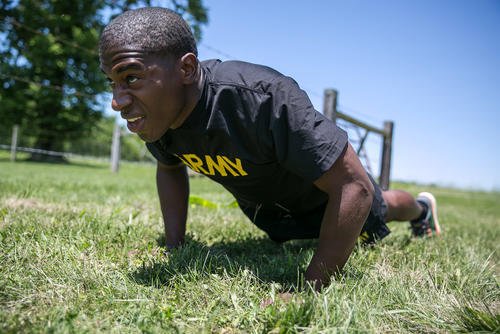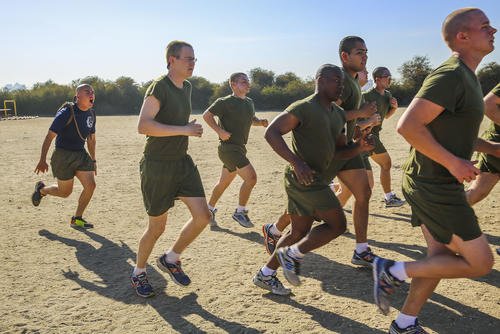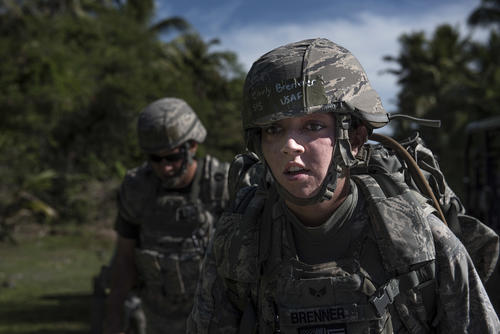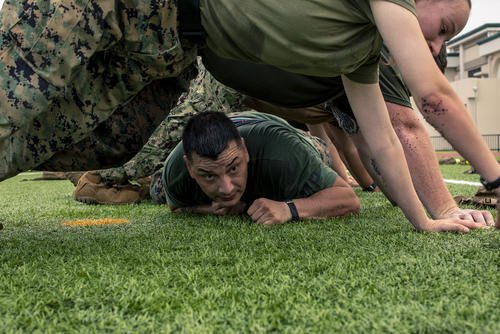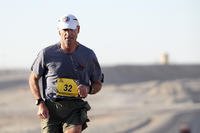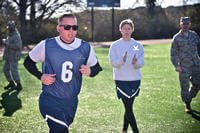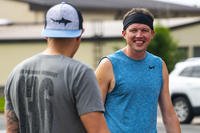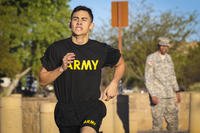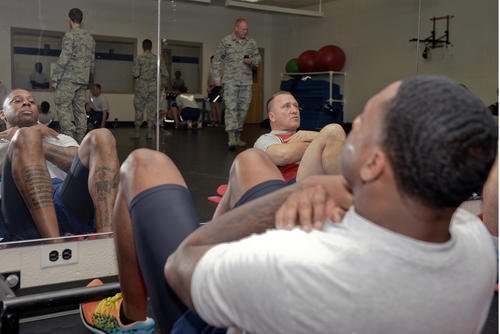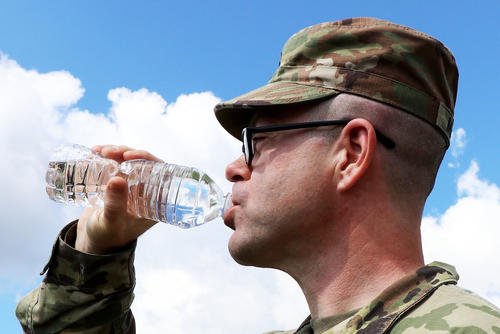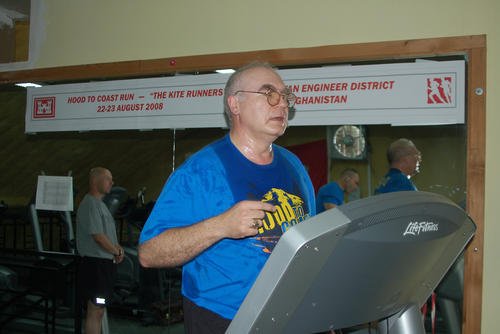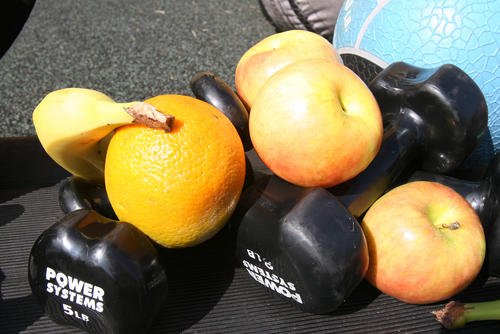The U.S. Air Force is implementing significant changes to the way explosive ordnance disposal (EOD) personnel are tested for fitness. Beginning in August, those in EOD roles will no longer be required to complete the standard 1.5-mile run, push-ups and sit-ups that have been cornerstones of Air Force fitness evaluations for decades.
The old test focused heavily on endurance and muscle stamina, testing only calisthenics and timed runs. While EOD personnel require cardiovascular endurance and muscle stamina, the physical demands of the job also necessitate strength, power and load-bearing capacity.
Now, they will face a job-specific, gender-neutral fitness test featuring a 1,000-meter row, a 20-pound medicine ball toss, a trap-bar deadlift (to simulate a load-bearing activity while moving in a bomb suit) and a weighted drop-roll-lift-run maneuver.
Read Next: The Essential Workout for Service Members Performing Load-Bearing Military Activities
This signifies a change in testing strength, power and muscle stamina, as well as cardiovascular endurance and load-bearing ability. Training is adapting to the needs of current and prospective Air Force bomb technicians, preparing them to perform the physically demanding tasks.
Understanding the Test Components

- 1,000-meter row: Measures aerobic and anaerobic endurance, demanding both cardiovascular fitness and muscular stamina. Compared to running, rowing will test both upper- and lower-body stamina, as well as cardio fitness.
- Medicine-ball power throw: Assesses explosive upper- and lower-body power, as well as coordination. You will perform a back, side and forward toss.
- Deadlift: Tests maximal lower-body and core strength, emphasizing proper technique and safe lifting mechanics. Airmen are scored on the maximum weight they can lift for five reps, ranging from 150 to 360 pounds.
- The Gruseter (weighted drop, roll, lift, run): This requires bomb techs to wear a 30-pound weight vest while carrying and rolling with a 50-pound sandbag for 15 meters. This is repeated five times for a total time. The Gruseter simulates the awkward movement that occurs when wearing a bomb suit while dealing with explosive hazards. By replicating the physical challenges of moving with an additional 70 to 80 pounds in training and testing, personnel can practice these physical requirements as it provides realistic and valuable preparation for the demanding tasks in a bomb suit.
Here is a Gruseter video demonstration.
What the New Test Means for Bomb Techs
- Realistic job preparation: The new standards better mirror the physical tasks that EOD airmen face, such as moving heavy equipment, carrying ordnance and working for extended periods in heavy protective gear. This requirement alone demands the ability to lift heavy weights off the floor.
- Gender- and age-neutral standards: There is an expectation of physical ability when doing dangerous EOD work, regardless of age or gender. These standards reflect on job performance and the development of testing and programming to enhance the capabilities of EOD airmen.
- Holistic fitness: Tactical fitness is holistic fitness and requires strength, power, grip strength, speed, agility, endurance, muscle stamina, flexibility and mobility. The new test emphasizes the importance of well-rounded fitness for EOD.
Adapting Your Training: What Should Change?
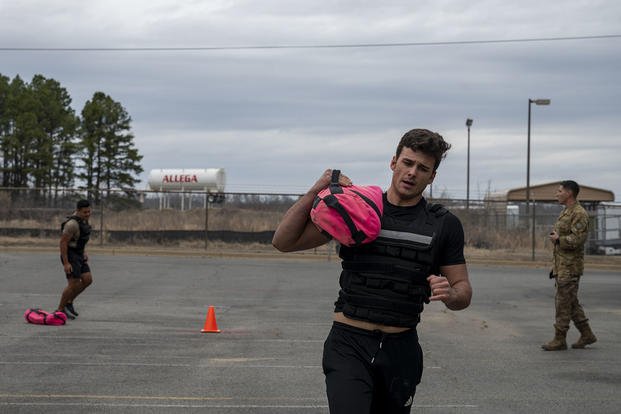
If you have been primarily engaging in calisthenics and cardio, it's time to enter the weight room and focus on developing strength and power. However, you should also maintain your muscle stamina and endurance, as these fitness components are essential for tactical day-to-day activities.
Traditional training for the Air Force fitness test emphasized timed runs and calisthenics exercises. The new test rewards athletes who can generate explosive power, lift heavy weights safely and maintain strong, steady cardiovascular output over shorter, intense intervals.
The program below is designed for individuals preparing for the new Air Force EOD fitness assessment. It can be scaled for beginner to advanced trainees and should be adjusted based on individual needs and fitness levels.
Here is a sample week of programming:
Day 1: Deadlift Focus and Accessory Strength
Warm up with running, biking or rowing. Do five deadlift sets of five reps each at 75% to 85% of your maximum. Follow with accessory lifts, such as Romanian deadlifts and loaded carries. Here are some deadlift workout ideas. After the lift session, do cardio (jog, ruck, bike or row) for 20 to 30 minutes and then stretch.
Day 2: Rowing Intervals, Upper-Body Strength and Medicine-Ball Power
After a proper warm-up, complete 500 meters five times at a faster pace than your goal test pace, with two minutes of rest between efforts. Focus on form and consistent power output. Follow with upper-body calisthenics with a weight vest, dumbbells, medicine ball throws and other lifts (bench press, military press, rows, etc.) as you prefer.
Day 3: Mobility, Core Stability and Active Recovery
Don’t skip Mobility Day. A midweek recovery day that focuses on nonimpact cardio, stretching, foam rolling and massaging helps prepare you for workouts later in the week.
Day 4: Combined Practice Circuit (All Events)
There’s nothing like doing the test to get better at the test. When you practice the test as a workout, you reduce test-taking anxiety and learn strategies for pacing and fueling yourself for improved performance. More importantly, you learn how not to take the test.
Do the 1,000-meter row, a 20-pound medicine ball toss, a trap bar deadlift and the Gruseter. You do not have to do this every week, but twice a month would be helpful in your training. On days you do not take the test as a workout, focus on any weaknesses you may have of the four events as your training day.
Day 5: Rowing Time Trial and Mixed Functional Training (Farmer’s Carry, Sled Push, Tire Flip, Etc.)
After a solid effort on the rowing machine of 500 to 1,000 meters, add a variety of activities to include load bearing, crawling, throwing and calisthenics while wearing a weight vest.
Add circuits with a variety of push, pull, crawl, carry and lunging:
Repeat three or four times.
- Pull-ups max
- Push-ups max + 10 dumbbell rows/arm in the push-up position
- Bear crawl 50 meters
- Walking lunges 50 meters
- Sled pull or push 50 meters
- Medicine ball throw 3 times
Day 6: Easy Cardio or Recovery Day with Stretching
Day 7: Rest or Light Movement
The new, gender-neutral fitness test for Air Force EOD marks a cultural shift that prioritizes mission needs and operational readiness. Those currently serving or aspiring to join the EOD community should adopt a training regimen that builds strength, power and load-bearing capacity, in addition to muscle stamina and endurance.
They should focus on not just passing the test, but also thriving in one of the most challenging roles the Air Force has to offer. With thoughtful preparation and a commitment to well-rounded fitness, EOD airmen can meet and exceed these new standards, ensuring they are ready for the demands of the mission and the safety of their team.
Want to Learn More About Military Life?
Whether you're thinking of joining the military, looking for fitness and basic training tips, or keeping up with military life and benefits, Military.com has you covered. Subscribe to Military.com to have military news, updates and resources delivered directly to your inbox.







